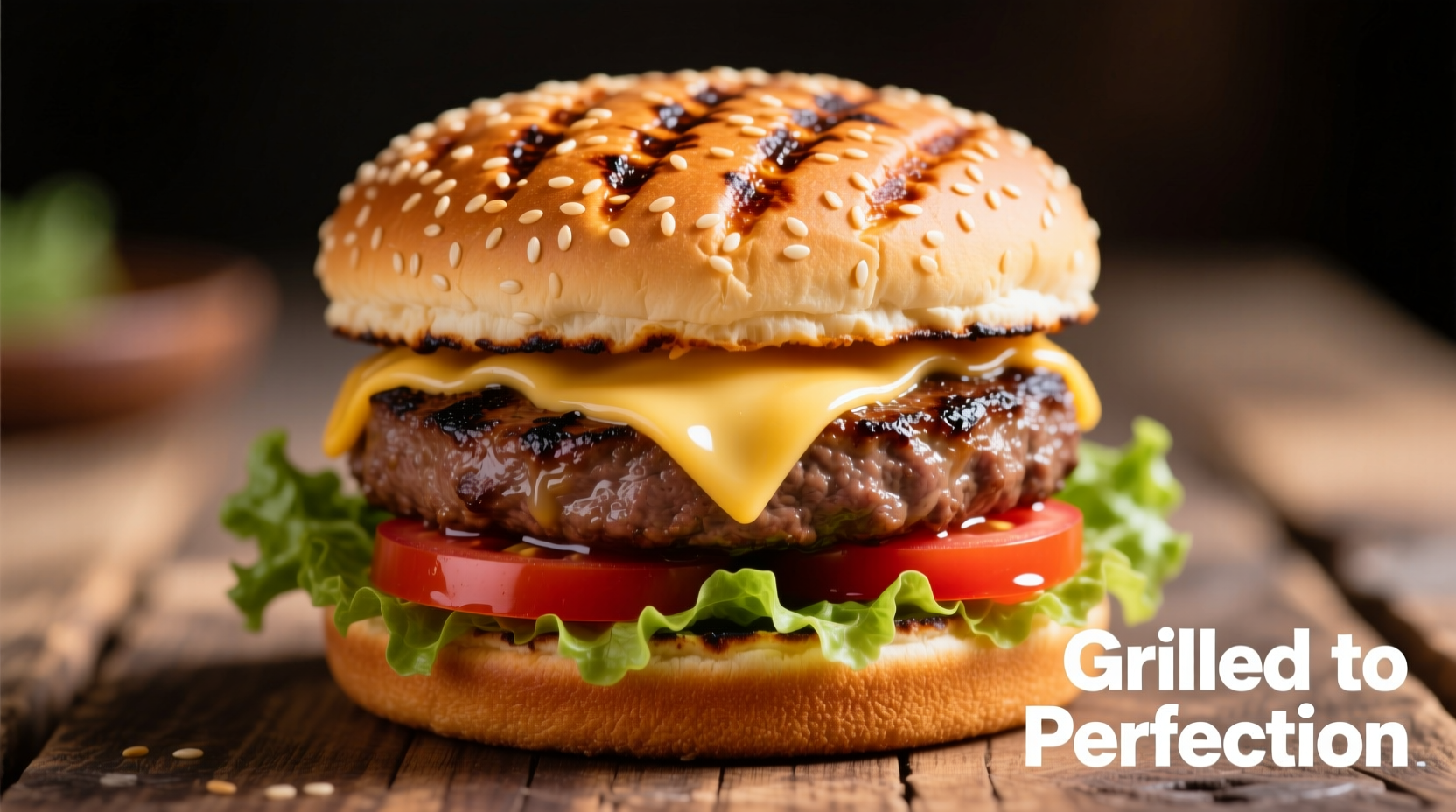The Essential Guide to Grilling Perfect Burgers Every Time
Nothing beats the satisfaction of biting into a perfectly grilled burger—crisp on the outside, juicy on the inside, with those beautiful char marks that only a hot grill can create. Yet many home cooks struggle with burgers that stick to the grates, fall apart, or end up dry and overcooked. The good news? Mastering grilled burgers is simpler than you think when you understand the science behind the sizzle.
Why Your Burgers Stick (And How to Prevent It)
The most common grilling mistake? Placing cold patties on a cool grill. When proteins meet a surface below 350°F, they bond strongly, causing sticking. Professional chefs at the Culinary Institute of America emphasize that proper grill preheating is non-negotiable for burger success. Your grill needs to reach 400-450°F before patties hit the grates—hot enough to instantly sear the exterior and create that crucial release layer.
| Doneness Level | Internal Temperature | USDA Recommendation |
|---|---|---|
| Medium-Rare | 130-135°F | Not recommended |
| Medium | 140-145°F | Minimum safe temperature |
| Medium-Well | 150-155°F | Recommended for safety |
| Well-Done | 160°F+ | Avoid for best texture |
This temperature guide aligns with USDA food safety standards for ground beef. Note that temperatures continue rising 5-10 degrees during resting, so remove burgers from heat slightly below your target temperature.
Building Better Burger Patties: The Science of Juiciness
What separates restaurant-quality burgers from ordinary ones starts long before they hit the grill. Food scientists at Kansas State University have demonstrated that fat content directly correlates with perceived juiciness in grilled burgers. Their research shows that 80% lean/20% fat ground beef consistently delivers superior moisture retention compared to leaner blends.
When forming patties:
- Create a slight thumb indentation in the center (¼ inch deep) to prevent bulging
- Keep edges smooth—no cracks where juices can escape
- Maintain consistent ¾-inch thickness for even cooking
- Handle meat minimally to avoid compacting proteins

Mastering the Grill: Temperature Zones and Timing
Professional grill masters use a two-zone fire system that provides both searing capability and gentle cooking space. Here's how to implement this technique:
- Preheat thoroughly: 15 minutes with all burners on high (gas) or until coals are covered with white ash (charcoal)
- Create zones: Turn off one burner side (gas) or push coals to one side (charcoal)
- Sear: Place patties over direct heat for 2-3 minutes per side to develop crust
- Finish cooking: Move to indirect heat until reaching target temperature
This method prevents flare-ups while ensuring even cooking. The Maillard reaction—the chemical process creating complex flavors—occurs most effectively between 300-500°F, explaining why proper temperature control is crucial for flavor development.
The Evolution of Burger Grilling Techniques
Burger grilling has evolved significantly since the early 20th century:
- 1920s-1940s: Simple charcoal grills with no temperature control, leading to inconsistent results
- 1950s-1970s: Introduction of gas grills brought more consistent heat but often resulted in drier burgers
- 1980s-2000s: Rise of two-zone grilling techniques adapted from professional kitchens
- 2010s-Present: Precision temperature monitoring with digital thermometers and smart grill technology
Modern food science has refined our understanding of protein denaturation and fat rendering, allowing home cooks to achieve restaurant-quality results with proper technique.
Critical Mistakes That Ruin Your Burgers
Avoid these common pitfalls that turn promising burgers into disappointments:
- Pressing with spatula: Squeezes out precious juices—let the burger release naturally
- Over-flipping: Flip only once for optimal crust development
- Peeking under the lid: Each lift loses significant heat and extends cooking time
- Slicing immediately: Rest for 5 minutes to allow juices to redistribute
Scenario-Specific Grilling Guidance
Different situations require tailored approaches:
- Rainy day grilling: Keep lid closed 25% longer; position grill away from wind
- Thin patties (slider size): Cook entirely over direct heat for 90 seconds per side
- Adding cheese: Place during last minute of cooking with lid closed for perfect melt
- Cheaper beef blends: Add 1 tbsp bacon fat per pound to compensate for lower fat content
Serving for Maximum Enjoyment
The final step makes all the difference. Toast your buns cut-side down over indirect heat for 30-60 seconds—this creates a moisture barrier that prevents sogginess. Build your burger with condiments directly on the bun (not the patty) to maintain structural integrity. Let your masterpiece rest for those crucial 5 minutes before serving; this allows the proteins to relax and reabsorb juices throughout the patty.
Pro Tips for Next-Level Burgers
- Chill formed patties for 30 minutes before grilling for cleaner sear lines
- Add 1 tbsp Worcestershire sauce per pound for umami depth without altering texture
- Use a bench scraper for clean patty transfers to avoid deformation
- Season with coarse salt just before grilling for optimal crust formation











 浙公网安备
33010002000092号
浙公网安备
33010002000092号 浙B2-20120091-4
浙B2-20120091-4